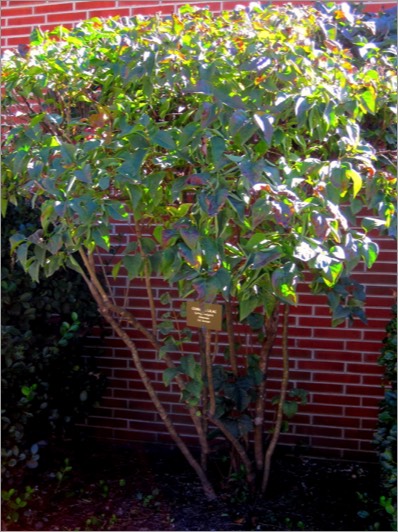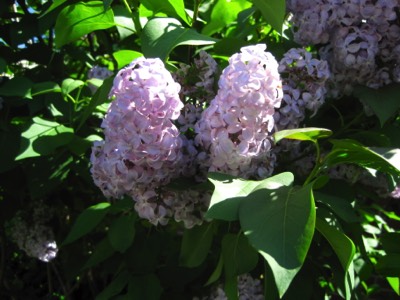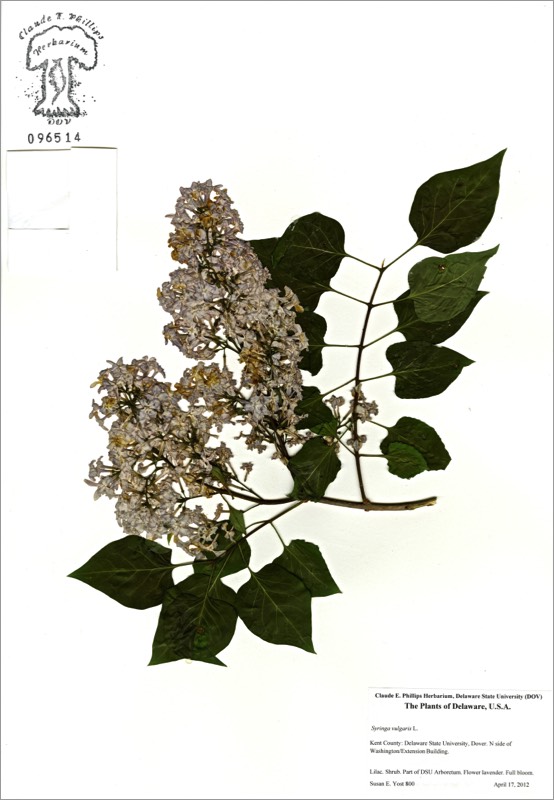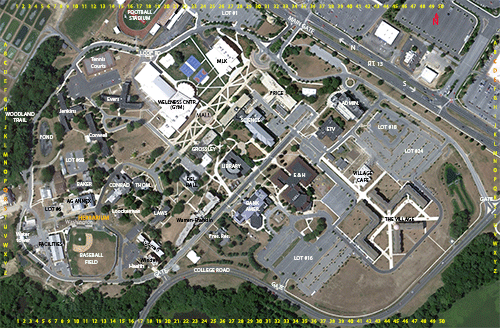*Syringa vulgaris


*Syringa vulgaris
COMMON LILAC
Oleaceae
S.E. Europe
Location: map coordinates T-8 (north side of Washington Building), N 39°11'7'' W 75°32'46''
Planting history: presently unknown.
Description:
*Non-native species (not native to Delaware)
COMMON LILAC
Oleaceae
S.E. Europe
Location: map coordinates T-8 (north side of Washington Building), N 39°11'7'' W 75°32'46''
Planting history: presently unknown.
Description:
- deciduous shrub or small tree
- etymology: Syringa from Greek syrinx (a pipe) because of the hollow stems; vulgaris = common
- leaves simple, oval to cordate (heart-shaped), opposite
- flowers lavender (occasionally white), in large dense clusters (panicles)
- fruit dry, brown, capsule
- popular spring ornamental; very attractive, scented, many cultivars; USDA hardiness zones 3-7
- leaves susceptible to powdery mildew
*Non-native species (not native to Delaware)


HIT REFRESH TO START LOCATION GRAPHIC